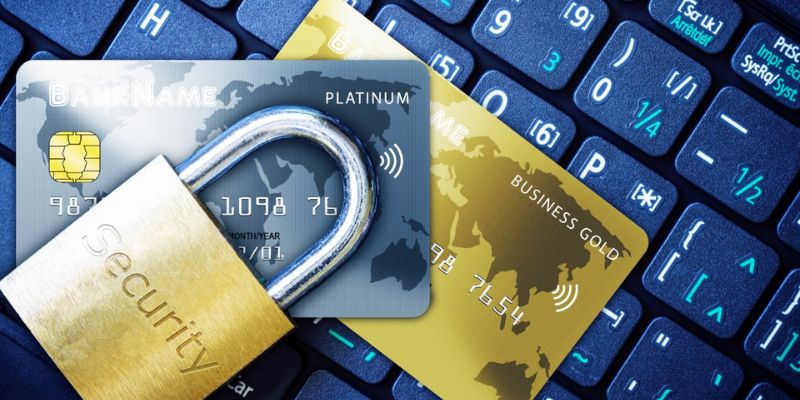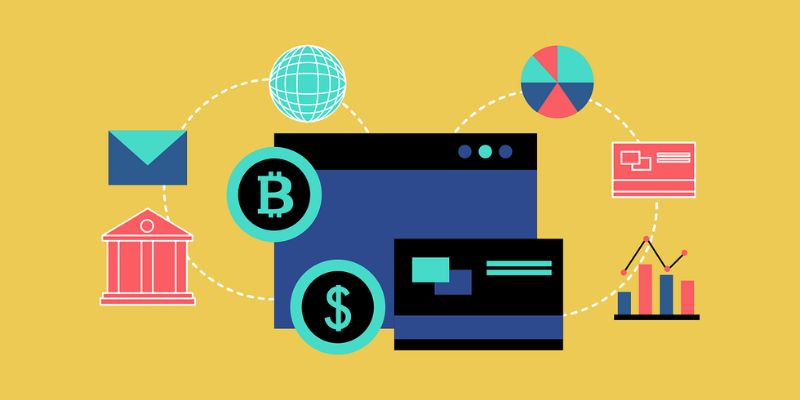Recent cases of digital payment fraud are climbing, and they’re hitting hard. Imagine waking up to find your bank account dry or your credit card maxed out. Scary, right? Frauds are crafting clever scams, leaving folks like us puzzled and out of pocket. In this article, we’re tearing into how these schemes work and how you can keep your money safe. We’ll dissect high-profile hacks, tear apart the tactics of today’s online scams, and expose the underbelly of mobile payment fraud. It’s not just about the bad stuff – we’ll also shine a light on beefing up your digital defense. So, let’s get smart about protecting those transactions!
Uncovering Digital Payment Security Breaches and Online Transaction Scams
Analysis of Recent High-Profile Payment System Hacks
In our digital world, paying online is as common as breathing. We do it all the time, but it’s not always safe. Look at recent hacks where millions were stolen. Cyber crooks found ways into big company systems and took heaps of money. This calls for us to be smart and stay alert.
They love targeting mobile apps, where they snatch your details and money quickly. Even big firms with lots of security can fall short. Imagine, a hacker finds a tiny crack and gets in. Then poof! Money’s gone just like magic, but it’s not fun at all.
The tricks they use are cunning and hard to see. They can fake a bank message or tamper with a payment link. It all looks real, but it’s not. You click, they win. They might get your password or worse, your cash. It’s happened to folks just like you and me.
The Anatomy of Contemporary Online Transaction Scams
Now, let’s look at today’s scams closely. They’re tricky and slick, making it tough to spot the lies. One such scam is when you get a text that seems like it’s from your bank. It says, “Alert! We sensed a problem with your card.” You panic, you click, and bam, they’ve got you.
They make webpages that look like real shops but aren’t. You think you’re buying shoes, but really, you’re just giving thieves your card info. This fraud is smooth and quick, and by the time you know, it’s too late.
Cryptocurrency isn’t safe either. Some folks think it’s the future, but it’s risky. Thieves make a fake currency sale, you try to buy, and you lose your money instead. It’s a sad story for those who’ve been tricked.
So what can we do? We put locks on our devices and passwords. You know, the long ones with letters, numbers, and symbols. We check our bank apps and look for fishy stuff. If things seem weird, we talk to the bank fast.
We also watch out for phony messages. Some might say you won big money or a prize, but think – did you enter a contest? If not, it’s probably fake. Learning the signs of a lie can save you a big headache.
Banks and shops are trying hard to fight this too. They make rules to keep our stuff safe. They need us to help by being sharp and reporting when things seem off. If we work together, we knock the crooks down a peg.
Staying in the know is key. We keep our eyes open for news of scams and learn how they work. The smarter we are, the harder it is for bad guys to trick us. So let’s stay sharp, protect our cash, and keep it out of the wrong hands.

Investigating Mobile Payment Fraud and Phishing Tactics
Case Studies: Mobile Payment Fraud Incidents
Let’s talk about keeping your money safe. We all use our phones to pay now. But crooks do too. We’ve seen folks lose cash to sneaky scams. One trick is fake apps that look real but steal your info. Folks tap to pay, but instead of buying a coffee, they give their card info away.
Another case happened with QR codes. They’re everywhere. A person scans what they think is a safe code. But it’s a trick, sending cash to a scammer. It’s like copying your house key for a stranger.
And have you heard about Jim from Ohio? He used a payment app to sell his bike, but the buyer paid with a hacked account. Jim lost his bike and got no cash.
To be clear, these are not all the cases. But they show how easy it is to trick good people. We need to stay sharp. So, remember to check apps and QR codes. They might not be what they seem.
Phishing Attacks on E-Wallets: Identifying Red Flags
Phishing is a big word for a simple bait trick. It’s like fishing. But instead of fish, they catch your private info. They send fake emails, texts, or calls that look real. They want you to share your payment login or card numbers.
Here’s how you spot these red flags. Always check who’s asking. Real banks won’t ask for your password by email. Look at links closely. If they look weird, don’t click. Look for misspellings – that’s a clue. And watch for urgent messages. ‘Act now or your account will close!’ That’s a trick.
You might think, “It won’t happen to me.” But it can. Take Lily. She got an email from what she thought was her e-wallet app. It said her account was locked. Scared, she clicked the link and logged in. But it was a fake site. The scammers got her info and took her money.
We must learn from these stories. Always double-check before sharing info. And if you’re unsure, go to the official site or call support. Don’t rush. It’s better to be safe than sorry.
Mobile payment fraud and phishing won’t stop. But we can protect ourselves. By learning the tricks and staying alert, we keep our cash safe. Just like we lock our doors at home, let’s lock our info online. It’s simple, like choosing the best lock for the best door. Remember, if something feels off, it probably is. Trust your gut and keep your money close.

Addressing the Rise of Unauthorized Transactions and P2P Exploits
Unauthorized Bank Transfers: Following the Money Trail
Money gets taken from folks’ accounts without them knowing all too often. They get an alert or check their bank app and bam, money’s gone. It’s scary and feels like a punch in the gut. For those thinking, “How does this happen?” It’s mostly because of hacks. Bad guys find ways to trick systems and sneak into accounts. They’re real sly about it too.
Now, to keep your hard-earned cash safe, you’ve gotta be smart. That starts with strong passwords; not something like ‘password123’. Use a mix of letters, numbers, and symbols. Also, keep an eye out for odd emails or calls asking about your bank stuff. Those could be phishing attacks, where scammers try to grab your info.
Exploring P2P Platform Vulnerabilities and Their Exploits
We pay our pals back for lunch or send cash gifts using apps now. These are P2P services, short for “peer-to-peer”. But just like a car, if you leave it unlocked with the keys in, trouble can hop right in. P2P platforms can be like that too.
Bad guys spot weak spots in these apps. Then they strike, making off with money that’s not theirs. They may also set up fake accounts, or even worse, take over a real person’s account. This is why whenever there’s a new feature or update in the app, you should jump on it. Updates are like new locks on your doors, keeping the sneaks out.
It’s sad but true; there’ve been folks who lost cash when they thought they were paying a buddy. Turns out, it was a scammer tricking them. To avoid this mess, double-check who you’re sending to. A quick message to your friend can confirm you’ve got the right person.
Remember, keep your app locked down with a strong password, update often, and double-check your sends. These steps may seem small, but they go a long way in keeping your money right where it should be – with you.
Keep your guard up, friends. The world of digital dollars is handy, but just like crossing the street, we’ve gotta look both ways, stay alert, and follow the safe path.

Strengthening Cybersecurity for Digital Transactions
Implementing Best Practices to Mitigate Payment App Hacks
Hackers love payment apps. They often break in to steal money. So what do we do? We fight back with smart moves.
First, always update your app. Outdated apps are easy targets. Next, set up strong passwords. Don’t use birthdays or “1234.” Mix letters, numbers, and symbols.
Enable two-factor authentication (2FA). It’s like a double lock on your door. Hackers hate that. Only use secure Wi-Fi for transactions. Public Wi-Fi can be dangerous. Stay clear of it.
Watch what you download. Some apps snoop around and find your financial info. Be picky about apps. If an app looks fishy, check it out first. Read reviews, and only download it if it looks safe.
Alert friends about these tips. The more people know, the safer we all are.
Advocating for Stronger Security Measures in Financial Institutions
Now let’s talk banks and money places. They have your back, right? But sometimes, they need to step it up.
We need them to have the latest in fighting online crooks. This means fresh tech and sharp-eyed teams. They should have tight checks on who gets into your account.
Banks should also train their people to spot scams and help us know the signs. Knowing what a fake email looks like can save your cash. They need to work fast if fraud pops up.
If something smells off with your account, tell your bank stat. Fast action can stop a thief in their tracks. They can’t take what they can’t reach.
And laws? We need clear rules. Banks and app-makers should follow these to keep your money safe. When everyone knows the playbook, we’re a team against fraud.
Talking to your bank about security is okay. Ask them what they do to guard your money. Feeling safe with your bank = peace of mind.
So, here’s the deal. Payment apps and banks are part of our daily life. We trust them with our hard-earned money. It’s on us to do our part. But it’s also on them to keep stepping up their game.
Lock it down, stay alert, and let’s keep our money out of the wrong hands.
We’ve delved into the murky waters of digital payment insecurity, dissecting high-profile system hacks and the mechanics of modern scams. I broke down mobile payment fraud and phishing, revealing case studies and the warning signs of e-wallet attacks. We also looked at unauthorized transactions and the soft spots in peer-to-peer (P2P) platforms.
As we wrap up, let’s reinforce this crucial takeaway: robust cybersecurity is non-negotiable. To guard our hard-earned money, we must adopt best practices and push for tougher security at financial institutions. Stay alert, stay informed, and make securing your digital transactions a top priority.
Q&A :
What are some examples of recent digital payment fraud cases?
In recent years, digital payment fraud cases have ranged from unauthorized transactions and phishing scams to identity theft and account takeovers. For example, in 2021, the FBI reported an increase in SIM swapping attacks, allowing fraudsters to bypass two-factor authentication on digital payment platforms. Additionally, fraudsters have been known to use social engineering tactics to trick victims into revealing sensitive information, leading to unauthorized payments.
How can consumers protect themselves against digital payment fraud?
Consumers can take several steps to safeguard against digital payment fraud, including using strong, unique passwords for their accounts, enabling two-factor authentication, and regularly monitoring their bank and payment app transactions for any unauthorized activity. It is also advisable to refrain from sharing sensitive payment information on unsecured websites or responding to unsolicited requests for financial details.
What are the most common methods used in recent digital payment fraud?
The most common methods used in recent digital payment fraud involve phishing emails or messages that mimic legitimate financial institutions, malware attacks targeting users’ devices, and skimming where fraudsters steal card information from point-of-sale systems. Additionally, social engineering tactics are frequently employed, wherein fraudsters manipulate individuals into voluntarily sharing their credentials.
What is the impact of digital payment fraud on both consumers and businesses?
Digital payment fraud can have a significant impact, leading to financial loss and eroding trust for both consumers and businesses. For consumers, it can result in unauthorized transactions and identity theft. Businesses can suffer from chargebacks, reputational damage, and increased costs associated with security and fraud prevention measures.
What recent technological advancements have been made to prevent digital payment fraud?
Recent technological advancements to prevent digital payment fraud include the implementation of advanced machine learning algorithms to detect fraudulent activity, the use of biometric authentication such as fingerprint or facial recognition, and the adoption of blockchain technology for secure and transparent transactions. Additionally, services like tokenization, which replaces sensitive account details with a unique digital identifier, have become increasingly popular among payment processors.

